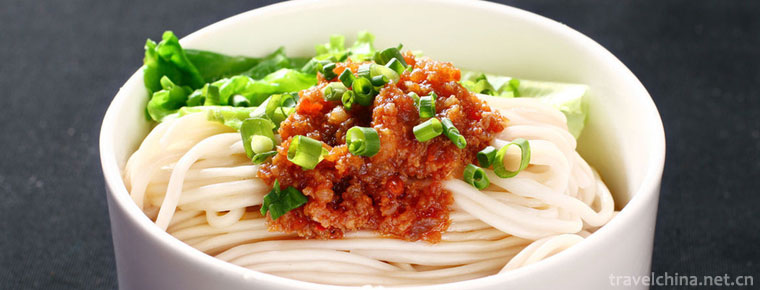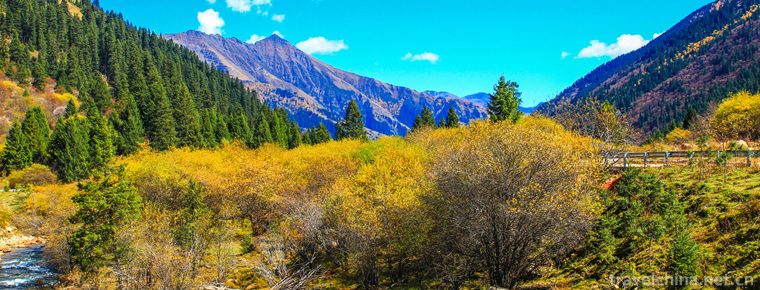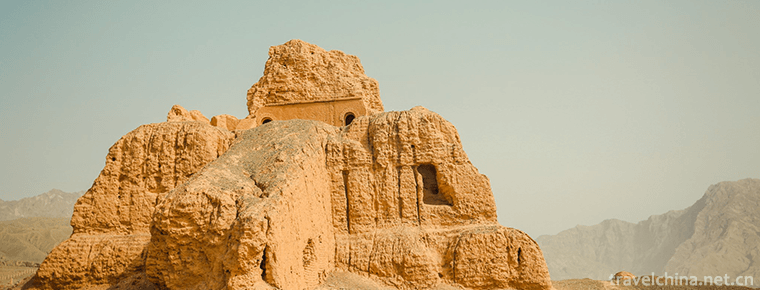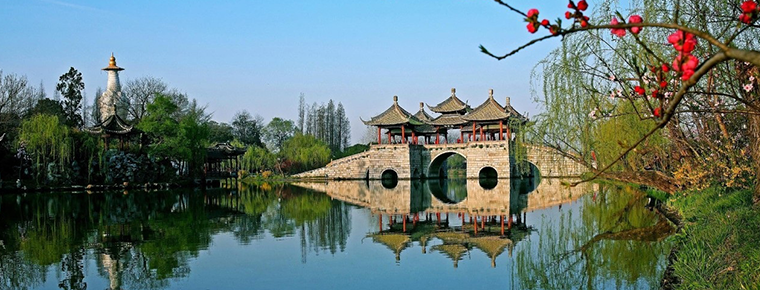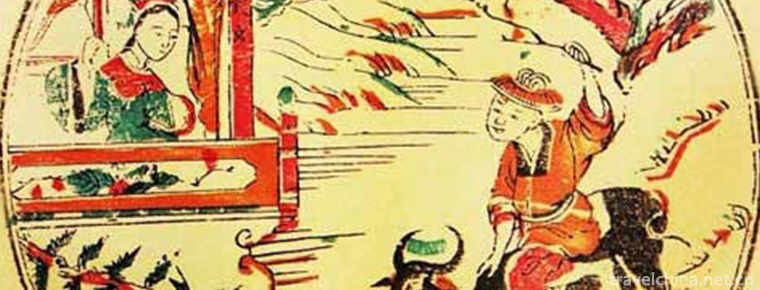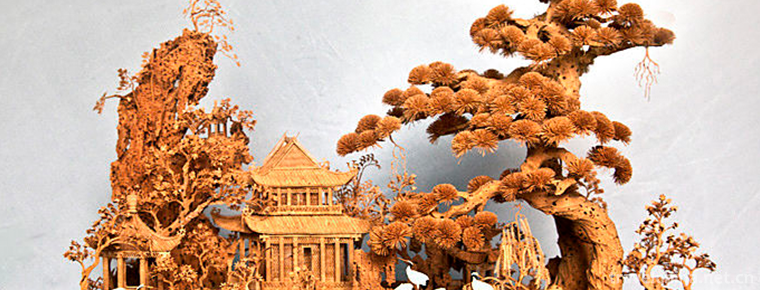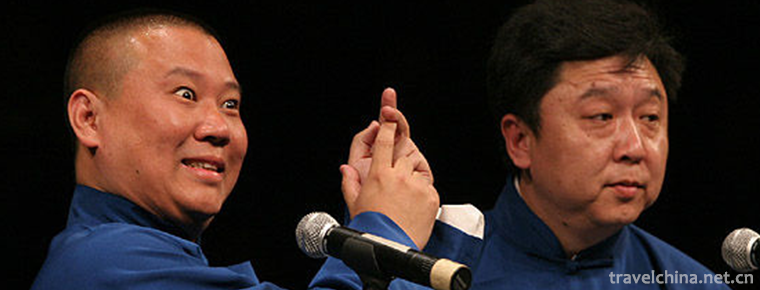Three Mausoleum of Shengjing
Three Mausoleum of Shengjing
The three mausoleums outside Guanzhou refer to the Fuling Tombs of Nuerhachi, the Taizong Emperor of the Qing Dynasty, and the Zhaoling Tombs of the Taizong Emperor of the Qing Dynasty. In Hetuala, the old home of Manchu (meaning "Henggang" in Manchu), there are also Yongling Tombs burying the four great ancestors of the Qing Dynasty, Zhao, Xing, Jing and Xian. In terms of architectural style, the three mausoleums outside Guan had a far-reaching impact on the construction of the mausoleums in the Qing Dynasty after entering the Guan Dynasty.
Fu Tomb
Brief introduction of Fuling tomb
Fuling is the mausoleum of Empress Nur Hachi and his queen Yehanala in the Qing Dynasty. It is located 11 kilometers northeast of Shenyang. So it is also called Dongling. Nurhachi was a Manchu, surnamed Aixinjueluo. He was appointed head of Jianzhou Department of Nuzhen Nationality (the predecessor of Manchu Nationality) in the Ming Dynasty. Later, he unified all the ministries of Nuzhen Nationality and established the regime of Jin (historically known as Houjin). He was proficient in the Han and Mongolian scripts, not only in military, but also in the Eight Banners system and Manchu scripts. He also made great achievements in politics and culture. He made outstanding contributions to the early development of the Manchu people and became the national hero of the Manchu people. He was buried in Fuling after his death. After his son, Emperor Taiji, established the Qing regime, he was honored as the Taizu of the Qing Dynasty.
Founded in 1629 (the year of his birth). Completed in 1651 (the eighth year of Shunzhi in the Qing Dynasty), Fuling was built by Emperors Kangxi and Qianlong, and has the scale of today. The mausoleum faces Hunhe River, backs Tianzhu Mountain, surrounded by mountains and rivers, with deep grass and dense forests, and its scenery is very quiet. Although its layout is the same as that of Zhaoling, it has two characteristics because it is built on the high slopes in the north and low slopes in the south. First, when visiting the mausoleum in Jin Dynasty, it is necessary to climb 108 stone steps from Zhenghongmen to the stele tower. Secondly, the buildings are more scattered and magnificent with the ups and downs of the slope.
Although the scale of Fuling is smaller than that of Zhaoling, it still has its own charm because of the two characteristics listed above and the beautiful environment. Therefore, people can still follow Fuling with great interest after visiting Zhaoling, and they will not feel the same. Now, the area around Fuling has been established as a sanatorium for Dongling.
Tong Zi board
Fuling Mausoleum is a large-scale cemetery with a total area of 194800 square meters. It is surrounded by rectangular red walls, with red gates in the South and red gates in the East and west. Zhenghongmen is a single-eaved Xieshan Peak building constructed by imitation wood of three couplets, with colorful glazed dragons embedded in the center of the sleeve walls on both sides of the East and west. Outside the gate are stone lions, Huabiao, stone archways, and in the south are dismounted tablets. The inscriptions of Han, Manchu, Mongolian, Hui and Tibetan scripts were replaced by wooden dismounted tablets during the Qianlong period. The archway is made of ochre stone, imitating wood. Four pillars on the third floor and four stone pillars on the top of which stand the stone beast "Looking at the sky and roaring". This is a special form of combination of Shifang and Wangzhu in early Qing Dynasty. The layout of the whole front of the mausoleum gate, like the donation board of the hall, is a concrete reflection of Manchu's early customs in the mausoleum architecture.
In Zhenghongmen, a green brick shrine leads directly to the temple and the grave. Between the pines on both sides of the Shinto, there are symmetrical stone carvings and camels, horses, tigers, marbles, or lying, sitting, or standing, which give people a sense of solemnity and dignity.
Display of divine power
The whole Mausoleum of Fuling is situated in the north and facing the south, and the terrain gradually rises from south to north. Through the stone arch bridge, the end of the flat land is to use steep slopes to build "108 pedals" stone steps. Up the steps, there stands a towering monument building on the platform, with ticket gates on all sides, a pedestal foundation under it, and a "monument of sacred merits and virtues of the Fuling Mausoleum of the Great Qing Dynasty". The inscription was written by Xuanye, the sage of the Qing Dynasty, in the 27th year of Kangxi (1688 A.D.). It is inscribed in Manchu and Han languages in detail. This paper describes Nurhachi's life achievements and the difficulties of his entrepreneurship in order to warn future generations. On both sides of the monument there are tea repair houses, fruit houses, polyester houses, provincial animal pavilions and Zhaifang buildings for sacrificial purposes.
Main hall
To the north of the monument is the square city of Castle style, which is the main building of the cemetery. Fangcheng is a rectangular brick building with a circumference of about 37O meters and a wall height of about 5 meters. There are roads, stomps and women's walls on the walls. The four corners of the city are built with the cross-ridge corner tower of the double eaves Xieshan Mountain, the coupon gate in the middle of the South wall, and the gate tower with the yellow glazed tile roof of the three eaves Xieshan type. On the lintel, there are the words "Longmen" in the three languages of Han, Manchu and Mongolia, with the red edge embedded with bronze and gold. There is a stamping Road on both sides leading directly to the city. In the middle of Fangcheng, there is Lone Hall, which is a place to worship God's throne and worship ancestors. The hall is built on a five-foot-high Xumi pedestal with three steps in front. The middle road is decorated with relief dragons. The pedestal is surrounded by carved fences. The carving is exquisite. The hall is a Xieshan yellow glazed tile roof building with three banners, four doors, eight windows, nine purlins and a circular corridor. Emperors Kangxi, Qianlong and Jiaqing visited the East many times to worship their ancestors. In front of the main hall, there is a silk-burning stone building for burning congratulatory tablets and silk sacrifices.
The three treasure Summit
Behind the Lone Palace is the Lingxing Gate. The north gate is located on the rectangular overturned Lianshumi pedestal, and the north gate is the Shidongmen. The Shidongmen is the passageway from Fangcheng to Baocheng. The upper gate is the Ming Tower with the heavy eaves and Xieshan style. There is a turtle stone tablet inscribed in the Ming Building which is the "Mausoleum of Emperor Taizu Gaodi". Baocheng is a semi-circular city with the same architectural form as Fangcheng. The wall is about 19O meters long and 5.5 meters high. There is an arc-shaped wall built from northeast to northwest corner of Fangcheng. It is the south wall of Baocheng, the fence of Baocheng, commonly known as "Moon City". The south wall of Yueya City is built with glazed false doors with colorful glazed broken branches and flowers. Fangcheng's Northeast and Northwest Corner Tower Horse Road connects Baocheng Horse Road. In the center of Baocheng, there is Baoding, which is 2 feet high and 33 feet long. It is made of white ash, sand and loess. Below the treasure city is the palace where the coffin of Taizu was buried. Fuling's precise structure and fine sculpture embody the perfect combination of ancient Chinese traditional architectural art and the characteristics of castle-like hills and Mausoleums in the early Qing Dynasty, which condenses the infinite admiration of Kaiji ancestors by the descendants of the Qing Dynasty.
Zhao Ling
Brief introduction of Zhao Ling
National key cultural relics protection units. It is the tomb of Emperor Tai Chi of the Taizong Emperor of the Qing Dynasty and his queen Boerji Jite. Because it is located at the north end of Shenyang, it is also called Beiling. Its scale is huge and its structure is complete, which is far from comparable with other Erling Tombs. Starting from Shenyang South Railway Station or North Railway Station, you can go directly to Zhaoling by car.
The tomb owner, Emperor Taiji, was Nurhachi's eighth son. After Nurhachi's death, he succeeded as the gold (later gold) master. And in the ten years of Tiancong (1636), it changed its name to Qing Dynasty and became emperor. During Huang Taiji's reign, he actively pursued the Sinicization policy, not only imitated the lighting system to set up "six ministries", but also organized manpower to translate Chinese classics. Like his father Nurhachi, he made outstanding contributions to the early development of the Manchu people.
Zhaoling was first built in Chongde, Qing Dynasty (1643), and completed in Shunzhi (1651). It was built by Emperor Kangxi and Emperor Jiaqing to become today's scale. Zhaoling is built directly on the flat ground instead of on the hills and rivers. It is surrounded by a dazzling wall, which is very similar to a small town. The whole mausoleum covers an area of 180,000 square meters and is divided into three parts. From south to north, the order is: front, recognize the stele to Zhenghongmen; middle, from Zhenghongmen to Longmen; rear, from Longmen to Baoding. The main buildings are built on the central axis, from south to North are: Shenqiao, archway, Zhenghongmen, stele pavilion, Longmen Gate, Longmen Hall, Ming Lou and Baoding. The two sides are symmetrically arranged with auxiliary buildings.
When you visit Zhaoling, you first swim in the front. The front part is outside the dazzling wall. On both sides of the road are Huabiao, Shishi, dressing Pavilion and so on, while in the middle is the archway. Archway is the main front building, built of bluestone, four pillars and three floors, exquisitely carved, unique, rare art treasures.
Visit the archway building, you can go to Zhenghongmen, which is the beginning of the tour in the middle. Zhenghongmen is the South Gate of the dazzling wall. Its floors are tall and solemn. The five-coloured glazed dragon wall decorated by its wings is more attractive because of its vivid shape. In Zhenghongmen, on both sides of the participating road are Huabiao, Shimao and Dawangzhu, which are opposite to each other. It is both neat and solemn. The most appreciated stone animals are "big white" and "small white". These two stone horses are vivid and lifelike. They are said to be carved from the prototype of the two horses that the tomb owner loved to ride most in his lifetime. Appreciate the stone horse, you can go to the stele pavilion. The stele pavilion, opposite Zhenghongmen, was built to praise the tomb owner. Inside, the stele is called the "Stele of Divine Merit and Virtue of Zhaoling Tomb".
From the stele pavilion to Longmen Gate. Longmen Gate is the South Gate of Fangcheng, opposite to the stele pavilion. Fangcheng is the rear part. It is built like a city pool, situated in a dazzling wall, as if it were a city in the city. When you visit Fangcheng, you should first visit Longyun Hall. Located in the center of Fangcheng City, the Lone Hall has Lone Gate in front, Ming Lou in back, matching halls in left and right, and corner towers in four corners, which are like many stars arched the moon, so it is very magnificent. The Lone Hall, with its exquisitely carved granite steps as its base, glittering yellow glazed tiles as its roof, and painted beams and carved gold tablets and red walls, is extraordinarily gorgeous. Visit Lone Hall and pass through Ming Lou to Baocheng. Baocheng is crescent-shaped at the north end of Fangcheng. Baoding is called Baoding in Baocheng City, which is the underground palace, where the coffins and funerary objects of the couple who are the owners of the tomb are placed. Climbing the top of the treasure and looking around, the trees are surrounded and the scenery is quiet. It is like being in the city's mountains and forests. A sense of comfort arises spontaneously. Now, Zhaoling has been established as Beiling Park.
Red door green square
Zhaoling is a large-scale mausoleum, covering an area of 180,000 square meters, which is built on flat ground. The cemetery is situated in the north and faces the South with the same structure as Fuling. It is surrounded by dazzling walls. The main red gate is located in the middle of the south. It consists of three semi-circular red arch gates, which are several meters high, a scarlet and magnificent. On the door is a single-eaved Xieshan-style gate with five-coloured glazed Dragon sleeve walls embedded on both wings. Outside the door are Xiama Stele, Huabiao, Shishiqiao and Qingshi Card, which were built in the past six years in Jiaqing. Fang. There are 6 Xiama Steles in Zhaoling, 2 in Hebei Province with Jade Belt, 2 in the south of Shenqiao and 1 in front of East and West Red Gates. The archway is on the third floor of four pillars, with a single eaves and hills. Under the eaves, there are wooden-like structure domes, flying ridges and cross-section relief flowers, flying dragons. There are four pairs of lions sitting on the four pillars, one pair of oracles. The whole archway is exquisite in carving, vivid in image, fantastic flowers and grass fighting, vivid in flying birds and animals. It has a very high artistic price. Value. There is also a small courtyard on both sides of the front door, which is the place for dressing and sacrificing ancestors.
Twelve feather forest
In the middle of Zhenghongmen is the flat and deep Shendao, which is lined up with Shidiaohua Table 1 pair, Shimao 6 pairs and Dawangzhu 1 pair from south to north. Stone beasts in turn are sitting lion, sitting unicorn, sitting badger, horse, camel, elephant, each pair, a total of 12, known as the "twelve-feather forest". One of the most striking is the two stone horses named "Dabai" and "Xiaobai", which were handed down to imitate the two beloved riding carvings of Huang Taijisheng. The stone statue erected a monument building after birth, and built a "monument to the sacred merits and virtues of the Zhaoling Mausoleum of the Qing Dynasty" inside. It was written by Emperor Kangxi. It was more than five meters high and weighed about 100,000 jin. The eaves and corners of the monument building are magnificent and magnificent, with a magnificent appearance beside them. There are two green brick and tile houses on the north, East and west sides of the monument building. They are the honor guard room, the milk tea house, the dining room and the fruit house, all of which are the sacrificial rooms of that year.
Main hall of Mausoleum
To the north is Fangcheng, the main mausoleum building of Zhaoling. The main gate of Fangcheng is Longmen Gate. The gate building is tall and wide with three roofs covered with glazed tiles of triple eaves and Xieshan style. On the top of the lintel hangs the quota of "Longmen" engraved in three languages: Han, Manchu and Mongolia. Fangcheng is a rectangular castle built of large green bricks, with corners with double eaves and cross ridges. Entering Fangcheng, the front is the main hall of Zhaoling - Longyan Hall, which is situated on the lofty Yanlian Xumi platform. The top of the hall is covered with yellow glazed tiles, and three glazed jewels are set in the middle. On both sides, there are East-West matching halls, and on the south, there are two two two-storey East-West matching halls, commonly known as fruit-drying halls.
Five town gate
There is a painted wooden door behind Lone Hall, called Stone Pillar Gate, also called License Plate. It has a hanging-hill glazed tile top, with one-sided stone pillars on both sides, with drum-holding stones in front and back, and stone animals with chains on the top of the pillars. Behind the stone pillar gate, there are five offerings of stone, which are used to suppress the underground palace gate. The underground palace gate is just below it. There are tunnels leading directly to the underground palace.
Emperor Ye long Xing
Passing through the coupon cave gate to the north of Shiwu Temple, we enter Crescent City. The glazed walls on the front wall show red eaves and green, with lotus flowers and pure vases carved on them. Above the entrance of the coupon cave is a Ming Tower, with a white jade tombstone of the Han Dynasty standing about 6 meters high and bearing a throne. The tablet is embossed with two dragon opera beads. The inscription is inscribed in three languages, Han, Manchu and Mongolia, as the "Mausoleum of Emperor Taizong Wen".
The northern part of Fangcheng is a crescent-shaped treasure city, which is also called Tuancheng. In the center of the city is a circular grave covered with white lime - Baoding, under which is a deep underground palace. Behind Baocheng is an artificially piled earth mountain, which was sealed as Longye Mountain in 1651 to embody the meaning of prosperity of imperial industry.
There is praise for poetry.
Although the whole Mausoleum of Zhaoling was built on the flat ground, the hall of Chonglou was hidden between the green pines and cypresses, with beautiful scenery and majestic momentum. Miao Junji, a Taoist scholar in the early Qing Dynasty, said in his poems, "The green hills of Longpan and the white jade bridge with pines and pines between them." Twelve feathers Lin Yan guards, the wind hiss Iron Horse White clouds.
Yong Ling
Brief introduction of Yong Ling
The Yongling Tomb of Qing Dynasty in Xinbin County of Fushun City is known as the first tomb outside Guanwai, where six ancestors of the Qing Dynasty are buried. Zhaoling and Fuling in Shenyang are collectively known as the three mausoleums outside Guanwai.
The Yongling Tomb of the Qing Dynasty was first built in 1558, initially known as the Xingjing Tomb. In 1659, it was renamed Yongling. It has a history of more than 400 years. The mausoleum is buried in Nurhachi's sixth ancestor, brother Tiemer, great-grandfather Fuman, grandfather Chueh Chang'an, father Tucker, uncle Lidun and uncle Tacha Pangu. In 1648, Zufu Ling of the Qing Dynasty chasing Meng Ge Tiemer as the "Zhaozu Emperor", Fuman as the "Xingzu Zhi Emperor", Juechang An as the "Jingzuyi Emperor" and Takshi as the "Xianzu Xuan Emperor". Emperors Kangxi, Qianlong, Jiaqing and Daoguang have visited Yongling nine times to pay tribute to their ancestors, making Yongling ancestor worship a national ceremony in the Qing Dynasty.
Yongling Mausoleum did not build palaces and pavilions at first. The buildings were all green bricks and tiles, solemn and solemn. With the prosperity of the Qing Royal family, the earliest and most peaceful cemetery built by the Qing royal family is becoming more and more perfect. In the 16th year of Kangxi, the Yongling Tomb was rebuilt, and the green bricks and tiles became red walls and yellow tiles. The scale and pattern of the cemetery were basically finalized. The existing Yongling Ancient Architectural Complex consists of Xiama Stele, Qiangongyuan, Fangcheng, Baocheng and Provincial Animal House, covering an area of more than 11,000 square meters.
Qingyongling is a precious historical and cultural heritage left by Manchu ancestors and a national key cultural relic protection unit. In 2003, it declared the world cultural heritage together with Zhaoling and Fuling in Shenyang. The magnificent cemetery building of Qingyongling reflects the beautiful nature, and has become a historical attraction for tourists at home and abroad and a link and bridge for cultural exchange with the outside world. 。
World Cultural Heritage and National Key Cultural Relics Protection Units.
Officials dismount
The whole tomb area of Yongling is composed of three parts: the front yard, Fangcheng and Baocheng, surrounded by red walls. In front of the Yongling Palace Gate, about 1000 meters away, stands a tall stone tablet on both sides of the Mausoleum Avenue. The inscription "Officials under the kings will dismount hereafter" is inscribed on the tablet in Manchu, Han and Mongolian languages, which is commonly known as the "dismount tablet". It is a sign of entering the mausoleum area. When officials under the kings came to this area, they had to get off their horses and drop off their sedan chairs to show their respect. The use of "Xiama Stele" came from the Ming Tomb.
Zheng Gong Gong men
After dismounting the monument and moving forward, it is the Shinto of the mausoleum. This is a four-foot-wide Huangsha Avenue, stretching straight to the main gate of the cemetery, the main red gate. Zhenghongmen is a hard hill-like yellow glazed tile roof building with three broad faces. It has kisses on the main ridge, beasts on the vertical ridge, beams and panels with colored paintings, and six vermilion-lacquered wooden fences inside. It has the unique style of Manchu architecture. On both sides of Zhenghongmen are red walls and blue tiles, and on the East are East and West Red doors.
Inherit the family and establish a state
Entering the main red gate, there are four monument pavilions of merit and virtue in the courtyard. The stele Pavilion is a single eaves Xieshan glazed tile roof, painted with oil, neat design and solemn tone. Inside the pavilion are the sacred monuments of Zhaozuyuan Emperor, Xingzuzhi Emperor, Jingzuyi Emperor, Xianzuxuan Emperor and the Four Empresses, inscribed with eulogies such as "Inheriting the Family and Founding the Nation". Between the stele Pavilion and Zhenghongmen, there are five hard Hill tiled houses on both sides of the East and west, Qiban and Zhuban rooms on the east, and tea and polyester rooms on the west. Behind the monument pavilion, there are fruit houses on both sides. They are three buildings of two-storey attic with outer corridor and are houses for sacrificial use. West of Xihongmen is the provincial cattle house, where cattle and sheep are slaughtered at sacrificial ceremonies.
Before shipment
In the north of the stele pavilion, according to the palace system of "the former dynasty and the latter bed", the square city is in front of which ancestors are sacrificed, and the treasure city behind which ancestors sleep. The south central part of Fangcheng is the Qiyun Gate, with Xieshan-style glazed tile roof, three wide areas and four deep areas, surrounded by outer corridors, with six huge vermilion-lacquered wooden door. The Shenlu of Zhongmen is only for the emperor, the east gate for other officials, and the west gate for the clerks. There is a green tile cantilever sleeve wall in the middle of the left and right wings of the Qiyun Gate, which is inlaid with colorful glazed dragons, teeth and claws, tail shaking and whiskers, rising between the clouds and the water. The mood is vivid and appealing. In the north of Fangcheng, Qiyun Palace, the main hall of the mausoleum, is built with warm pavilions and treasure beds to worship the deities of the four ancestors. It is the place where emperors worship and perform sacrifices, and also the main building of the mausoleum. The Qiyun Palace is built on a rectangular platform with three broad faces. It has a single eave, Xieshan-style yellow glazed tile roof and is decorated with gold and paintings. The lower forehead is covered with the quota of "Qiyun Dian" written in Chinese, Han and Mongolian languages. There are three matching halls in the East and west. They are all Xieshan-style yellow glazed tile roofs, three-sided corridors, and one burning silk Pavilion in front of the matching hall, burning sacrificial silk.
Later retirement in Baocheng
Behind the Qiyun Palace is Baocheng, which has an octagonal horseshoe-shaped plane and is surrounded by mausoleums. A two-storey platform has been built with stone walls in front of it. There are three sections of pavement in front of the platform. There are about 20 levels of pavement, including imperial roads, the first floor, the left funeral town and the right funeral tower. On the second floor, Fuman is buried in the middle, and Chueh Chang'an, Takshi and Mengmu are buried on the northeast side of Fuman's tomb. It is rumored that Montermu is a mound of clothes and crowns, which is called "soul-calling burial". Here is an old elm tree, commonly known as the "divine tree". Qianlong's forty-three-year Eastern Tour for the "divine tree Fu", and the imperial pen repair books, erect the side of the monument, now moved to the Xipei Hall. On the side of the stele, there are also glazed walls around the divine tree, which are vividly and beautifully carved. There are also castle-like arrow towers, corner towers and horse paths on the square city. The mausoleums are laid flat, and the underground palaces are sealed.
Green dot red
Although the scale of Yongling is not large, it is surrounded by mountains. The mountains are verdant, with beautiful waters and pleasant scenery. In addition, the view is deep and wide. From a distance, the glazed roof and the red palace wall hidden in the green trees are just like a little bright red in the green bushes.






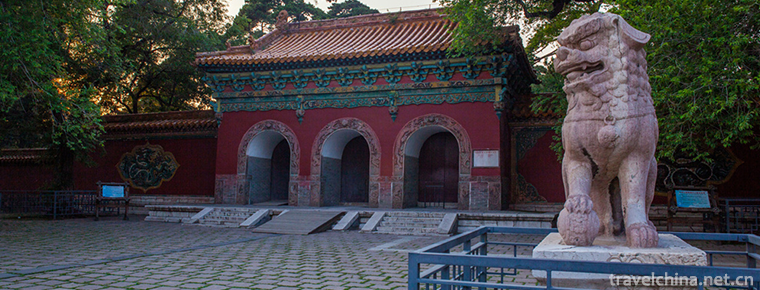
-
Aba Tibetan and Qiang Autonomous Prefecture
abbreviated as Aba Prefecture, is a national autonomous prefecture in Sichuan Province.
Views: 300 Time 2018-10-13 -
Privacy Policy
We takes users' information safety and privacy as our lifeline. Based on our basic principle "Users' needs are our first priority", we are committed to enhancing the transparency of informat.
Views: 1664 Time 2018-12-08 -
Juyong Pass of Great Wall of China
Juyongguan Great Wall is a famous ancient city along the Great Wall of Beijing and a national cultural relic protection unit. It is a national AAAA scenic spot assessed by Beijing Tourism Bureau.
Views: 181 Time 2018-12-10 -
Subashi Buddhist Temple Site
Subashi Buddhist Temple Site , also known as Zhaohuili Temple, is located in the south foot of the Queletag Mountains in the northeast of Kuqa County, Xinjiang. It is a national key.
Views: 157 Time 2019-02-13 -
Landscape Architecture in Yangzhou
Yangzhou gardens began in the Western Han Dynasty, flourished in the Sui and Tang Dynasties, matured in the Song and Ming Dynasties, and flourished in the Qianlong Period of the Qing Dynasty..
Views: 143 Time 2019-04-21 -
Foshan Wood Engraving New Year Pictures
Foshan woodcut New Year's picture is a famous folk New Year's picture in South China and a wonderful flower of Lingnan traditional folk culture. It is as famous as the New Year.
Views: 175 Time 2019-04-29 -
Cork paintings
Cork painting, also known as cork carving, woodcut. Chinese traditional folk sculpture crafts. It is mainly produced in Fuzhou, Fujian Province. It is a handicraft combining carving and painting. Simp.
Views: 148 Time 2019-06-11 -
Cross talk
Crosstalk is a folk art of rap and singing. It takes the form of speaking, learning, teasing and singing to highlight its characteristics. Famous cross talk performers include Zhang Shouchen, Ma Sanli.
Views: 229 Time 2019-07-03 -
Your smile is so beautiful Tik Tok Songs 2020 Hot Songs
The most pleasant thing is to listen to a song like the spring breeze, pure and clean children's voice washing the city's dusty heart..
Views: 423 Time 2020-05-21 -
Daofu steamed bun with beef and mutton
Steamed bun with beef and mutton is a special traditional delicious food of Hui nationality. It is famous at home and abroad for its strict selection of materials, cooking essence, rich nutrition and mellow taste. The eating method of beef and mutton steamed .
Views: 348 Time 2020-12-06 -
Meishan transportation
Meishan occupies an important traffic area at the South Gate of Chengdu, including Chengdu Leshan expressway, Chengdu Ya'an expressway, Chengdu Ziji Luzhou Expressway passing Renshou City, Leya Expressway passing through Hongya City, and Suizi .
Views: 331 Time 2020-12-18
